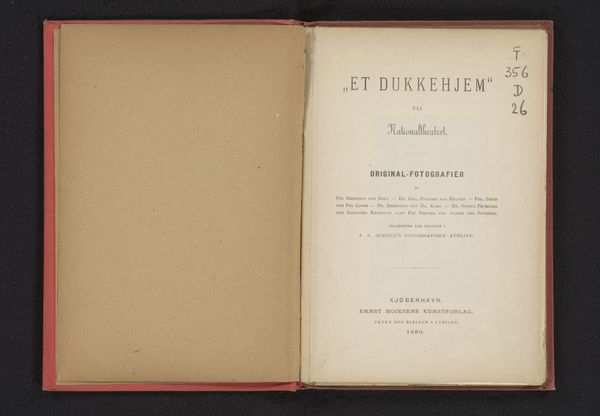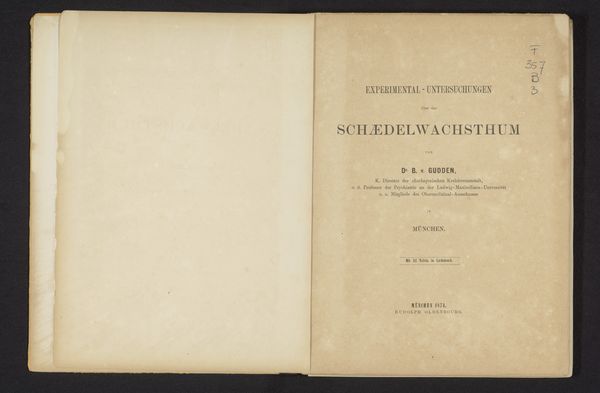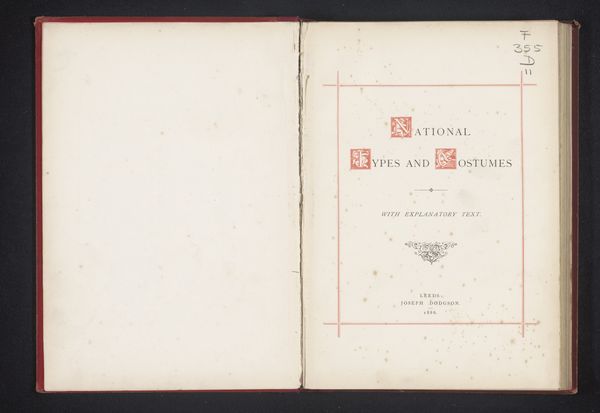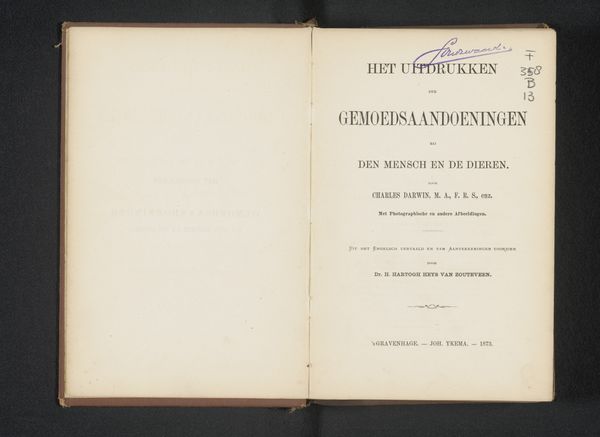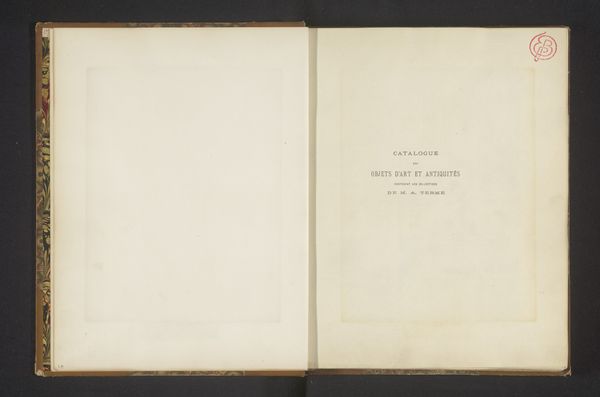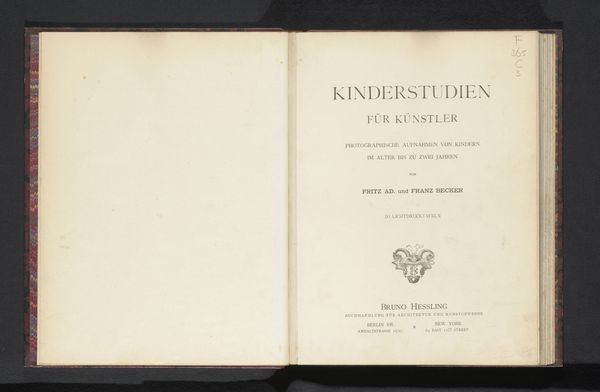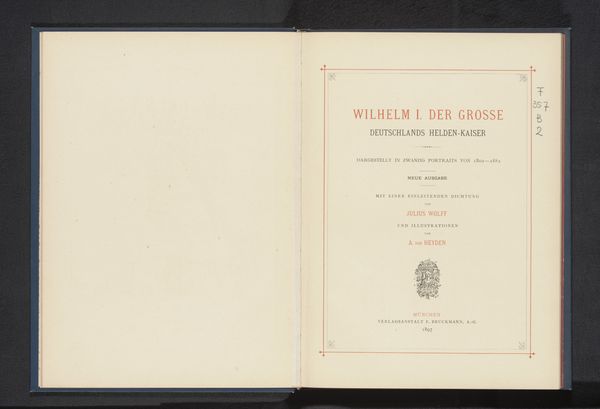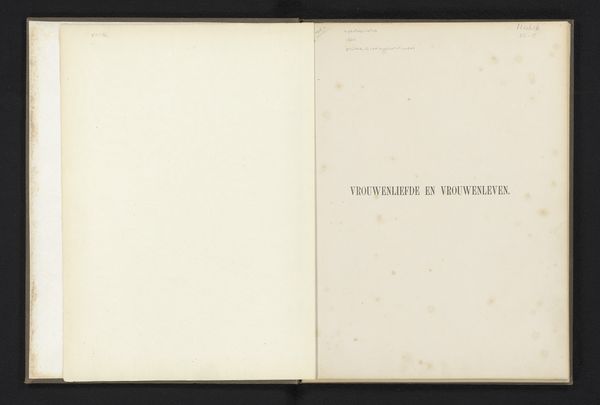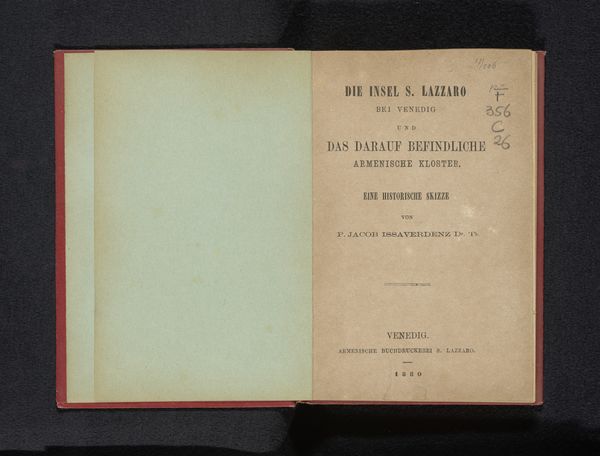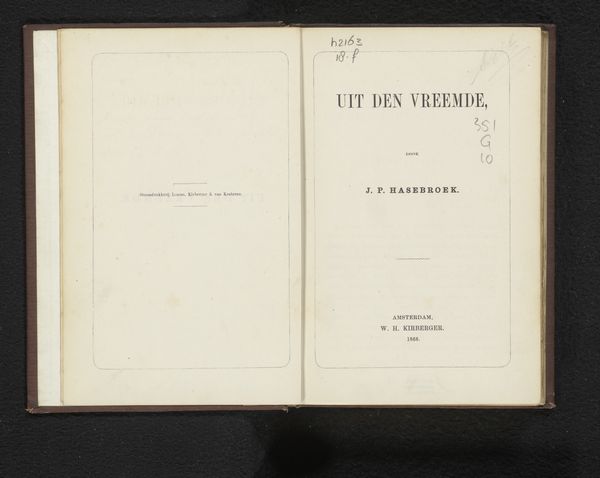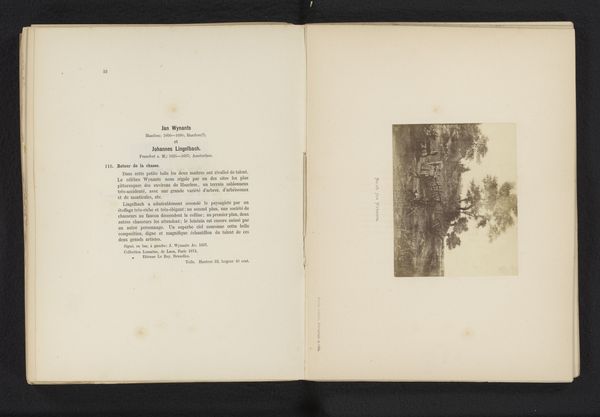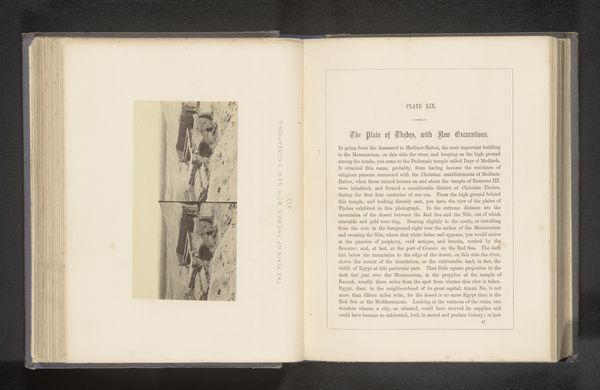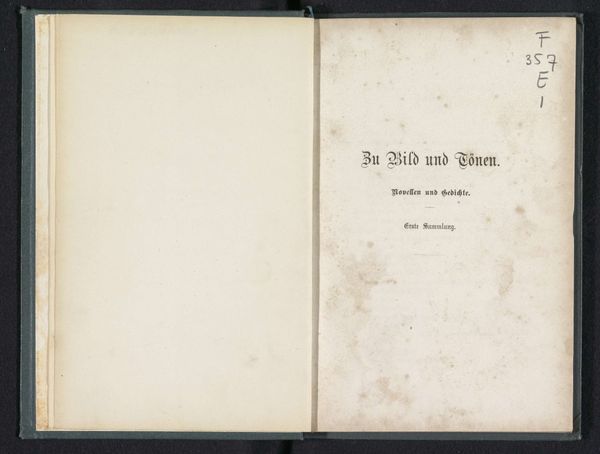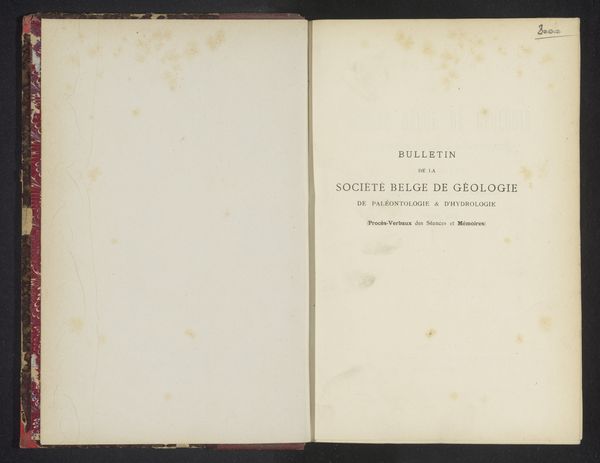
The Dresden Gallery : fifty of the finest examples of the old masters of this famous gallery reproduced in permanent photography with descriptive letterpress 1875
0:00
0:00
print, textile, photography, collotype
#
portrait
#
aged paper
#
homemade paper
#
script typography
#
paperlike
# print
#
book
#
landscape
#
textile
#
paper texture
#
photography
#
collotype
#
folded paper
#
thick font
#
genre-painting
#
delicate typography
#
academic-art
#
letter paper
#
historical font
Dimensions: height 380 mm, width 280 mm, thickness 35 mm
Copyright: Rijks Museum: Open Domain
Curator: My initial impression? There's a quiet, aged beauty in the composition; it seems deliberately sparse, with a clear emphasis on textual elements and the tangible quality of the paper itself. Editor: We're looking at an image of an opened book titled "The Dresden Gallery: fifty of the finest examples of the old masters of this famous gallery reproduced in permanent photography with descriptive letterpress." It dates to 1875 and was produced by Bickers & Son. The cover displays a deep understanding of printing processes available during that era. Curator: You're right to point out the deliberate crafting here. What I notice is the contrast between the stark text and the soft, almost tactile look of the aged paper—the page itself feels like an artifact as much as a medium. It reminds me of the handmade papers produced in the 19th century, a marker of labor and craft separate from today’s industrial publishing norms. Editor: Precisely. Consider the historical context: photography was relatively new and the decision to reproduce masterpieces through this medium signals a shift in accessibility. This book makes the treasures of the Dresden Gallery available to a wider audience beyond those who could physically visit. And think about those 'old masters' that they thought so essential to reproduce - mostly wealthy, white, cis-gendered men. What does it mean to give access without challenging these systemic biases in representation? Curator: Good point. The chosen materials themselves speak to an evolving technological landscape in visual reproduction. "Permanent photography" and "descriptive letterpress" – terms that highlight not only the new techniques used but also the promise of preservation and dissemination in an era with fewer restrictions against the expansion of these industries. Editor: Absolutely. I am drawn to that very concept of “permanence,” it stands in contrast to our ever-changing, ephemeral digital world. The choice of photography over other reproduction methods certainly implies an effort toward democratization, but this image, the book's artifact, prompts us to reconsider those power dynamics. What choices are being made and what does accessibility actually look like here? Who benefits, and who might still be excluded by this approach to photographic documentation and circulation? Curator: A valuable reflection. This image, seemingly simple at first glance, unveils complex dialogues surrounding production, accessibility, and, indeed, enduring power structures in the art world. Editor: Indeed, something as 'simple' as opening a book really opens up larger issues.
Comments
No comments
Be the first to comment and join the conversation on the ultimate creative platform.
